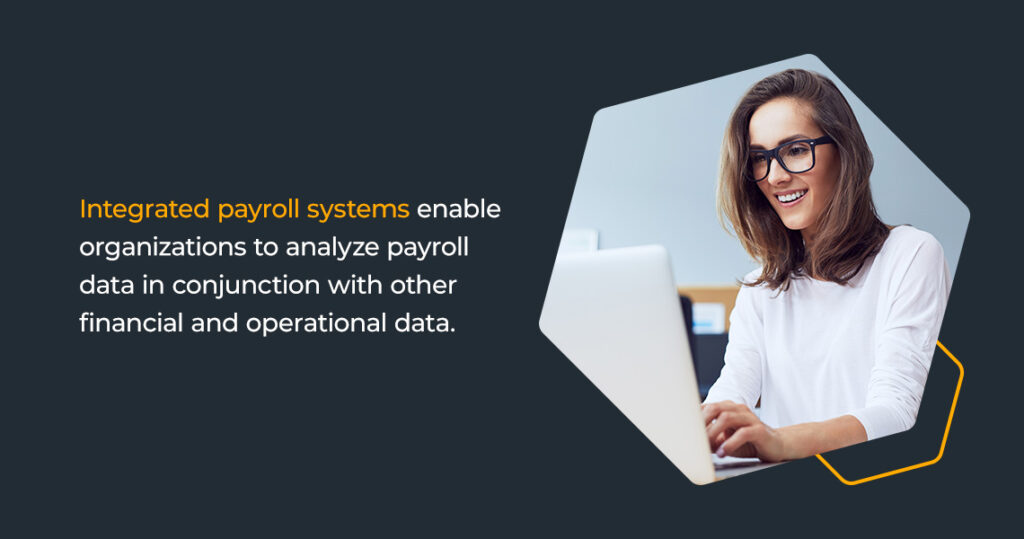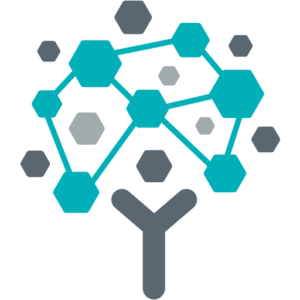Reading Time: 5 minutes
Efficient management of payroll processes is crucial for organizations of all sizes. Traditionally, payroll and accounting tasks have been handled separately, leading to potential inefficiencies, errors, and time-consuming manual work. However, with the advent of technology, integrating payroll systems with accounting software has emerged as a game-changer, offering significant benefits and streamlining operations.
Below, we explore the importance of payroll integration and the advantages of integrating payroll with accounting software. By seamlessly connecting these two critical functions, organizations can achieve a more comprehensive and cohesive approach to their financial operations.
Why Is Payroll Integration Important?
Payroll integration holds significant importance for organizations due to several reasons:
Accuracy and Efficiency
Integrating payroll with other systems, such as accounting software or human resources (HR) systems, ensures the accuracy and efficiency of payroll processes. By automating data transfer and calculations, organizations can minimize the risk of errors that may occur during manual entry. This integration streamlines workflows, reduces manual intervention, and improves overall payroll accuracy.
Time and Cost Savings
Payroll integration saves time and reduces administrative costs. Minimizing manual data entry, reconciliation, and duplicate tasks allows HR and finance teams to focus on more strategic activities. Automated processes also reduce the chances of costly payroll errors, such as incorrect tax withholdings or miscalculations. Moreover, integrated systems provide real-time data updates, eliminating the need for manual synchronization and improving operational efficiency.
Compliance and Reporting
Compliance with tax regulations, labor laws, and reporting requirements is crucial for organizations. Payroll integration ensures that the necessary deductions, withholdings, and payroll taxes are accurately calculated and reported. This reduces the risk of non-compliance penalties and enables organizations to meet legal obligations in a timely manner. Integrated systems also provide robust reporting capabilities, allowing for easy generation of payroll reports, tax filings, and other essential documentation.
Data Accuracy and Security
Integrating payroll systems with other systems ensures data consistency and security. Manual data entry can lead to errors and discrepancies, jeopardizing the integrity of payroll records. By integrating systems, data flows seamlessly between different platforms, reducing the risk of data entry mistakes. Additionally, data security measures implemented within integrated systems protect sensitive employee information, ensuring confidentiality and compliance with data protection regulations.
Employee Experience
Payroll integration can significantly improve the employee experience. Integrated systems often provide employee self-service portals where employees can access their payroll information, view pay stubs, update personal details, and manage leave requests. This self-service functionality enhances transparency, empowers employees to take control of their payroll-related activities, and reduces the administrative burden on HR personnel.
Data Analysis and Decision-Making

Integrated payroll systems enable organizations to analyze payroll data in conjunction with other financial and operational data. This comprehensive view allows for better financial analysis, budgeting, and forecasting. Organizations can gain insights into labor costs, employee benefits, and productivity metrics, aiding strategic decision-making and resource allocation.
What to Look for in Integrated HR and Payroll Software
When evaluating integrated HR and payroll software, there are several key factors to consider. Here are some important aspects to look for:
- Comprehensive functionality: Ensure that the software offers a comprehensive range of features and functionalities to handle both HR and payroll processes effectively. It should cover essential HR functions such as employee onboarding, leave management, performance evaluations, and employee data management, along with payroll tasks like payroll calculations, tax management, and direct deposit.
- Data integration and synchronization: The software should have robust integration capabilities to synchronize data between the HR and payroll modules. This ensures that employee information, such as personal details, salary changes, benefits, and deductions, seamlessly flows from the HR system to the payroll system without manual intervention. Look for software that offers real-time data synchronization to maintain accurate and up-to-date records across both functions.
- Compliance and tax management: Compliance with tax regulations and labor laws is crucial for accurate payroll processing. The software should have built-in features to handle tax calculations, deductions, and withholdings in accordance with local regulations. It should also stay updated with changes in tax laws to ensure compliance. Additionally, the software should generate payroll reports, tax forms, and other necessary documentation to simplify tax filings and reporting requirements.
- Self-service portals: Look for software that offers intuitive and user-friendly self-service portals where employees can view pay stubs, update personal details, submit time-off requests, access tax documents, and review benefits information.
- Reporting and analytics: Effective reporting and analytics capabilities are essential for gaining insights into HR and payroll data. The software should provide pre-built reports for payroll summaries, tax reports, employee compensation analysis, and other relevant metrics. It should also offer customizable reporting options to generate ad-hoc reports based on specific requirements. Advanced analytics features can provide valuable insights into labor costs, turnover rates, and other HR-related metrics to support data-driven decision-making.
- Scalability and flexibility: Consider the scalability and flexibility of the software to accommodate the changing needs of your organization. Ensure that it can handle growth in terms of employee numbers, complexity, and multi-location requirements. The software should also be customizable to adapt to your specific HR and payroll policies and workflows.
- Vendor support and reputation: Assess the reputation and track record of the software vendor. Read reviews, seek recommendations, and evaluate the level of customer support and service provided. Ensure that the vendor offers regular updates and maintenance to keep the software up to date and compliant with changing regulations.
Benefits of MIP®
MIP Fund Accounting® is a popular software solution designed specifically for nonprofits and organizations in the public sector. When it comes to payroll integration, MIP Fund Accounting® offers several benefits:
- Seamless data flow: MIP Fund Accounting® enables seamless integration between its payroll module and the overall accounting system. This integration ensures smooth data flow between payroll processes and other financial functions, eliminating the need for manual data entry or data synchronization. The payroll data seamlessly integrates with general ledger accounts, allowing for accurate and up-to-date financial reporting.
- Time and cost savings: By automating payroll processes and integrating them with the accounting system, our software saves time and reduces administrative costs. It eliminates the need for duplicate data entry and reduces manual calculations, minimizing the chances of errors. This streamlining of payroll tasks frees up valuable time for HR and finance personnel to focus on other critical activities and strategic initiatives.
- Compliance with nonprofit regulations: Our software solution is designed to meet the specific compliance requirements of nonprofit organizations. It ensures accurate calculations and reporting of payroll taxes, deductions, and benefits, in line with nonprofit regulations and guidelines. Our software keeps up with changes in tax laws, allowing your organization to stay compliant and avoid penalties.
- Robust reporting and analytics: Our system provides robust reporting and analytics capabilities for payroll data. It offers pre-built payroll reports and customizable reporting options to generate payroll summaries, tax reports, employee compensation analysis, and more. Gain insights into labor costs, track employee expenses, and make informed decisions based on real-time data.
- Employee self-service: MIP Fund Accounting® includes self-service functionality for employees, empowering them to access their payroll information and make necessary updates. Employees can view pay stubs, access W-2 forms, update personal details, and manage time-off requests through the self-service portal. This feature enhances employee engagement and reduces the administrative burden on HR staff.
- Scalability and flexibility: Our software is scalable and flexible, allowing your organization to adapt and grow as your needs change. It can handle a range of payroll complexities, including multi-location, multi-state, and grant-specific requirements. The software is customizable, enabling your organization to align it with your unique payroll policies, chart of accounts, and reporting structures.
Request a Demo
By leveraging technology to streamline payroll processes, your organization can achieve improved efficiency, better data management, and enhanced financial analysis. Embracing this integration empowers businesses to focus on strategic initiatives and foster a more productive and engaged workforce.
Request a demo of MIP Fund Accounting® today.

Share this post





